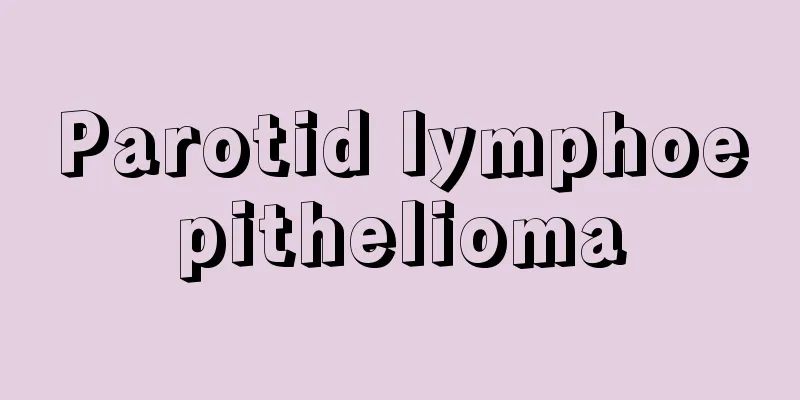Parotid lymphoepithelioma

|
Parotid lymphoepithelioma is a relatively rare type of malignant tumor. The causes of this disease are mostly related to long-term exposure to radiation, viral infection, frequent exposure to smoke or contact with chemicals. The general symptoms are non-fixed swelling, which is mostly unilateral and painless. Therefore, many people often do not pay enough attention to this disease and thus miss the best time for treatment. The specific situation is briefly described as follows. 1. Surgery and chemotherapy. The main treatments for malignant tumors include surgical resection of tumor lesions, chemotherapy combined with radiotherapy, and targeted drug therapy. On the basis of surgical resection to reduce the tumor burden, chemotherapy can control the spread of cancer cells throughout the body and reduce the recurrence and metastasis rates. 2. Modern medicine mainly uses surgical resection to treat this disease. It is reported that the 5-year survival rate after surgery for parotid cancer is around 95%. When the patient's malignant tumor has invaded the surrounding tissues and there is residual cancer left at the postoperative margin, adjuvant radiotherapy should be considered. If the patient is in good mental state, in good physical condition, and has surgery in time, he or she will survive longer. 3. The occurrence of primary parotid lymphoma is closely related to radiation. Salivary gland tumors have been reported as a complication of radiotherapy as early as the 1960s. In addition, viral infections and frequent exposure to smoke, dust and chemicals may also be related to the occurrence of the disease. 4. Low-grade marginal zone B-cell lymphoma and mucosa-associated lymphoma often occur in benign lymphoepithelial lesions and myoepithelial sialadenitis, while myoepithelial sialadenitis is usually associated with autoimmune diseases and rarely occurs in patients without autoimmune diseases. Therefore, it is speculated that the disease is related to parotitis and immune dysfunction. 5. Common symptoms include a progressively enlarging non-fixed mass, which is usually unilateral and painless. Sometimes local pain, cervical lymphadenopathy or facial nerve paralysis may occur. In some rare cases, the submandibular gland may be invaded simultaneously. Lesions may also invade the skin or deeper tissues. Some autoimmune diseases, such as rheumatoid arthritis, may coexist at the same time. 6. The diagnosis was confirmed by surgical biopsy and pathological histological examination based on the painless mass that appeared in the parotid gland. 80% of patients are in stage I or II at diagnosis. Primary parotid lymphoma is staged using the Ann Arbor staging system. However, the misdiagnosis rate of this disease is high because other malignant tumors are often suspected when seeking medical treatment, while this disease is rarely considered. 7. For stage I, surgical resection is usually used, followed by postoperative radiotherapy. The recommended radiotherapy dose is 40 to 45 Gy. Stage II: surgical resection followed by radiotherapy or chemotherapy. Parotid lymphoma is sensitive to chemotherapy or radiotherapy. For patients with multiple lesions or distant dissemination in stages III to IV, comprehensive treatment is mainly chemotherapy and radiotherapy. |
>>: When do Fujian mangoes ripen
Recommend
Will there be a foreign body sensation when the throat is scratched
The throat is related to people's pronunciati...
What are the exercises for asymmetrical nostrils
Women love beauty very much. If they find that th...
Is fresh Gastrodia elata poisonous? It turns out this is the truth
Gastrodia elata is a traditional Chinese medicine...
Sweating waist in the middle of the night
Sleeping is something we have to do every day. Sl...
Why does my chest hurt at the age of 17
People care a lot about their bodies, especially ...
Can I still drink red date yogurt during menstruation?
Yogurt is rich in nutritional value and has good ...
Will there be abnormal liver function in the early stage of liver cancer?
Liver cancer may not directly cause abnormal live...
Nursing measures for respiratory tract before lung cancer surgery
Lung cancer patients often experience respiratory...
Prostate cancer often occurs in people over 70 years old. How to prevent prostate cancer
Prostate cancer refers to an epithelial malignant...
Will I get stomach pain if I drink honey on an empty stomach?
Will I get stomach pain if I drink honey on an em...
What will fatty liver develop into?
Patients who are overweight, drink frequently, ar...
Seven foods that are good for the heart
The heart is the most important organ in our huma...
How long does it take to get pregnant after a course of chemotherapy for nasopharyngeal carcinoma
How long does it take to get pregnant after a cou...
How to prevent fibroids in daily life
Nowadays, the incidence of fibroids is relatively...
Can stomach cancer be transmitted through kissing?
With the continuous development of society, peopl...









